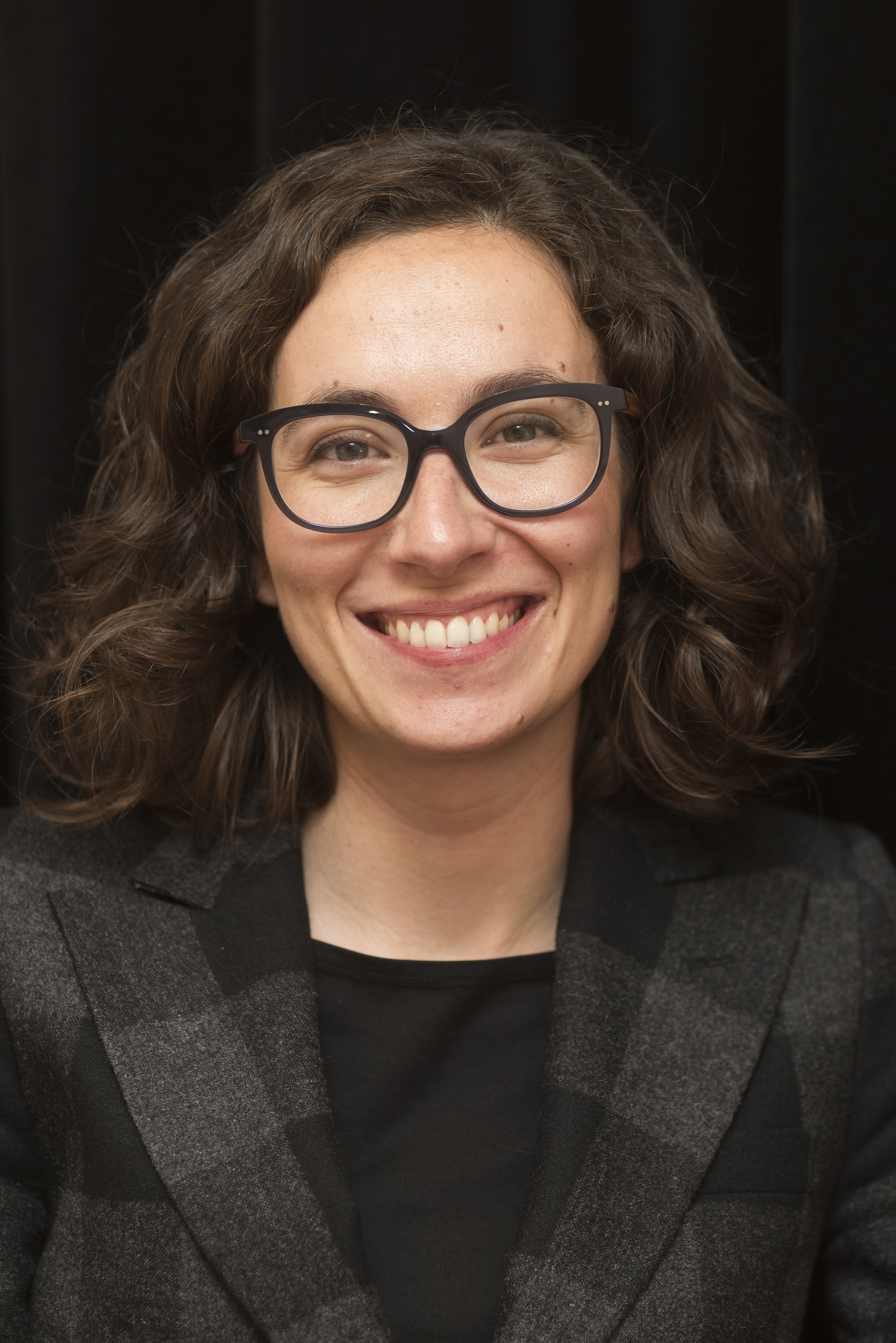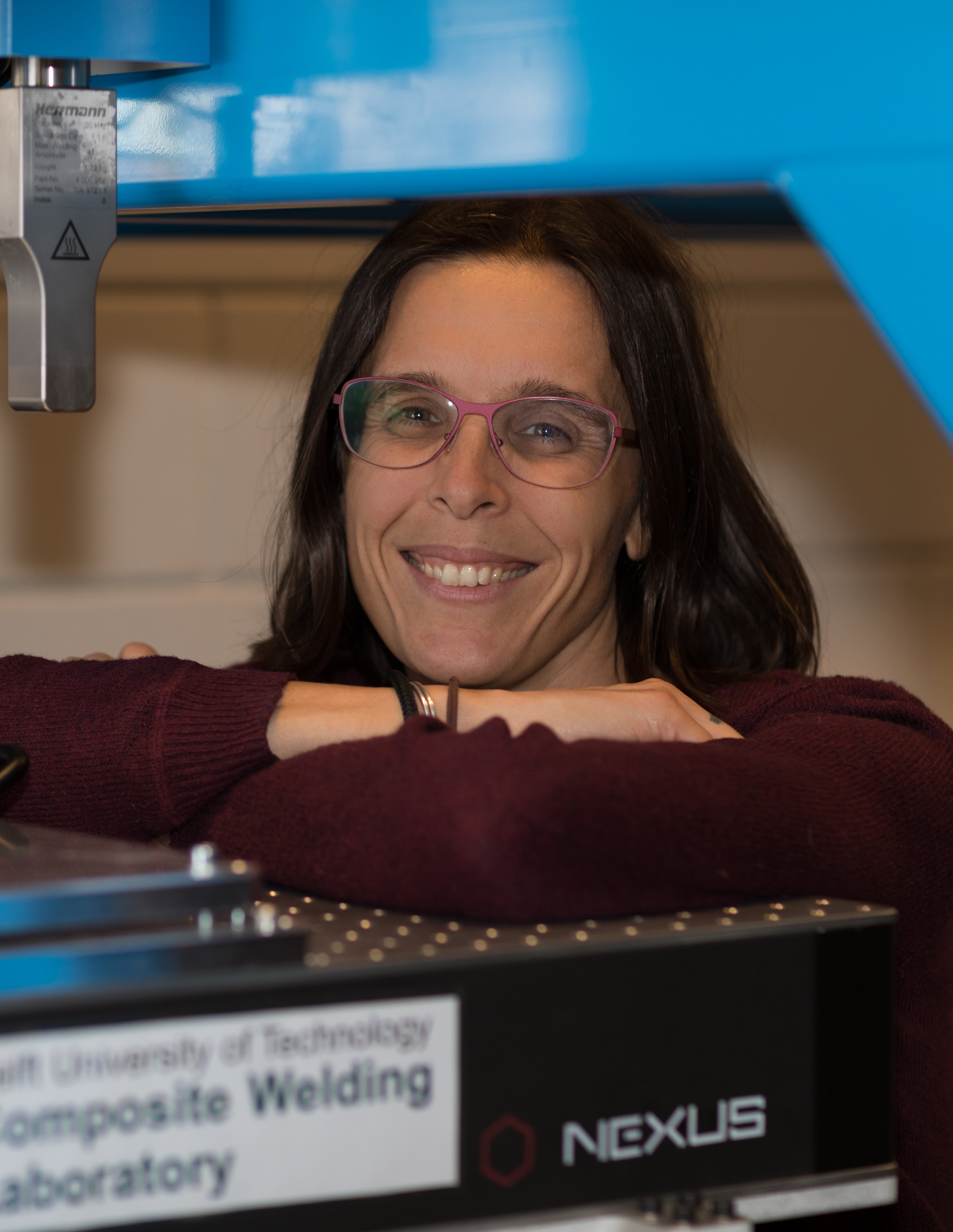Despite the fact that more and more women are pursuing careers in STEM – science, technology, engineering and mathematics – the gender gap is still significant. The good news is that at the Faculty of Aerospace Engineering, the number of women has consistently increased over the last years. But as of 2016, women still represented just 13 percent of students (bachelor’s and master’s), 20 percent of PhD candidates and 13 percent of academic staff. Those numbers reflect the paradigm of the past, but what does the future look like?
Dr. Sofia Teixeira de Freitas
Assistant Professor Dr. Sofia Teixeira de Freitas took an unconventional path to her career in aerospace. After completing a master’s degree in civil engineering in her native Portugal, she worked in the construction industry for two years. “In the first year of practice I was already missing the challenge of learning and exploring new fields so I decided to do a PhD.”
That desire to learn brought Teixeira de Freitas to Delft to where she earned a PhD in civil engineering in 2012. With research focused on bridges, after her PhD she wanted to explore new structures. “I thought, why not try something that is even more challenging,” she recalled. So she decided to apply for a postdoctoral position in aerospace, trying to apply her previous knowledge and expertise on bonded structures in aircraft. “I thought, they are the pioneers in bonded structures so why not try it. I think it was the sake of the challenge that drove me to change.”
Taking that leap resulted in good things for Teixeira de Freitas. In 2014, she received the prestigious Delft Technology Fellowship, which awards tenure-track positions to outstanding female academic researchers. As a fellow, she has had the unique opportunity to establish her own research group. And in 2015, she was also the recipient of a Veni grant from the Netherlands Organization for Scientific Research (NWO). Teixeira de Freitas is using her position to pursue research interests in the understanding of the failure mechanisms and degradation of adhesively bonded structures, using the principles of structural mechanics.
Although she acknowledges that aerospace is a male-dominated field, especially in higher level positions, Teixeira de Freitas believes things are changing. With regards to her fellowship and her Veni grant, she said, “All these initiatives do contribute enormously to pushing females to a higher level. I’m enjoying that for the moment and I think we are heading in the right direction.”
Looking to the future, Teixeira de Freitas thinks there need to be more female teachers and professors. “Delivering knowledge to students, showing that there are females in scientific and engineering careers, will be a model for girls who are currently in secondary school and thinking about university,” she said. “You can look at women who are successful, who are passionate about their jobs in STEM. Having those role models I think is one of the most important things.”
Dr. Irene Fernandez Villegas
Dr. Irene Fernandez Villegas always liked science. “I was really interested in chemistry because it was fun just to mess around with things and I always loved math,” she said. “When I finally understood it, I also really liked physics. I’ve always been a nerd!” Early on she also realised she excelled most under pressure so she opted to study aerospace, which she saw as the most challenging degree. “I think I was raised to believe that you could do anything you wanted. I was encouraged from the beginning.”
During her studies at Universidad Politécnica de Madrid, Fernandez Villegas noted that only around 10% of students and almost no teachers were female. “But I never felt that people looked down on me or that I couldn’t do things because I was a woman,” she said. “I never felt treated less, but I was always getting very good grades so that helps.”
After completing her studies, Fernandez Villegas worked for Spain’s National Institute of Aerospace Technology (INTA), where she focused on materials. While working at INTA, she also earned a PhD in aerospace engineering from Universidad Politécnica de Madrid. In 2008 she came to TU Delft as a researcher and became an assistant professor four years later, where she now works on welding processes for composites.
During the last year, thanks to her research and her self-described stubbornness, some game changing things have happened for Fernandez Villegas. When she started at TU Delft ten years ago she began working on a process called ultrasonic welding. She saw the potential so she went to Airbus and told them about her results. “They said no, we are never going to use that process because we don’t believe in it. I said fine, I will prove you wrong.” Last year Airbus brought a list of the welding technologies they want to use for their new aircraft and her technology was right at the top. Fernandez Villegas now manages a project to industrialise that technology.
On the idea of changing the paradigm, Fernandez Villegas thinks we don’t necessarily have to encourage girls to pursue careers in science. “I think we have to let them know that they can do whatever they want to, that they can be as smart as or smarter than guys and not necessarily just in science.” But for those women who do want to pursue a career in aerospace, she has some sound advice. “Don’t forget that you are women. This is a male dominated field and I’ve seen a lot of women, including myself, who tried to act like guys. I think we shouldn’t lose the fact that we are women and we are different. That doesn’t mean that we are less.”
Tineke Bakker-van der Veen
Tineke Bakker-van der Veen has a photo when she was about two years old sitting with her mother and grandmother next to the airstrip at Schiphol airport watching the planes land and take off. “I think that’s where my interest in the magic of aerospace started,” said the TU Delft aerospace alum (MSc, 2005).That passion never faded and eventually led to her current role as Managing Director of Boeing Benelux & Nordics.
The Dutch native credits her parents with inspiring her interest in engineering. “Even from a really young age, they always explained things to me, made it possible to help them with projects,” she said. Though she considered studying mechanical engineering, she chose aerospace because of the focus on innovation and what she describes as “pushing the boundaries on a daily basis.”
During her studies, Bakker-van der Veen recalls there wasn’t a female aerospace leader who she could look to as an example. That, in part, inspires her active involvement in mentoring programmes and promoting engineering and technology with young people. “We have to open up the door for future generations of innovators, entrepreneurs and engineers, to be available if they want to reach out, if they want to have a chat,” she said. “But I don’t want to just focus on the gender issue, it’s also about inclusion, that we make every child really enthusiastic about STEM education and show them that STEM is something that’s exciting, that you can have an amazing opportunity and career in aerospace where everyone can be a game changer. By doing that, we also open up the door for the next female leaders.”
Before joining Boeing, Bakker-van der Veen worked for well-known companies including Rolls-Royce, Airbus and Fokker. Her roles have ranged from being on the operational shop floor to management positions and she has always felt like part of the team. But she acknowledges the fact that women do stand out in this male-dominated environment. “What was important for me is that I always wanted to be judged on my performance, not my gender,” she said. “Yes, as a woman, you do stick out in a male-dominated field. That has some advantages when it comes to presenting things because you do draw attention. But you’d better perform well because it’s like you have a spotlight on you.”
As for inspiring the next generation of aerospace engineers, Bakker-van der Veen believes it’s important to stay true to yourself. “There is no way that you can have a successful career by pretending and acting upon what other people might expect,” she said. She also encourages being open to feedback and finding people you know you can trust who are honest with you. “Try to determine what you can bring to the table and what strengths you have that can really make a difference for the team.”



